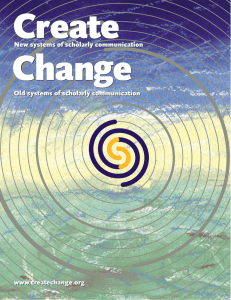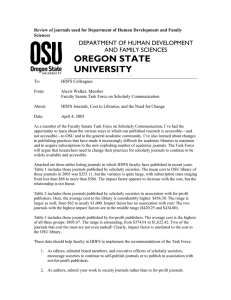Open Access to Scholarly Work for OSU... By Michael Witbeck
advertisement
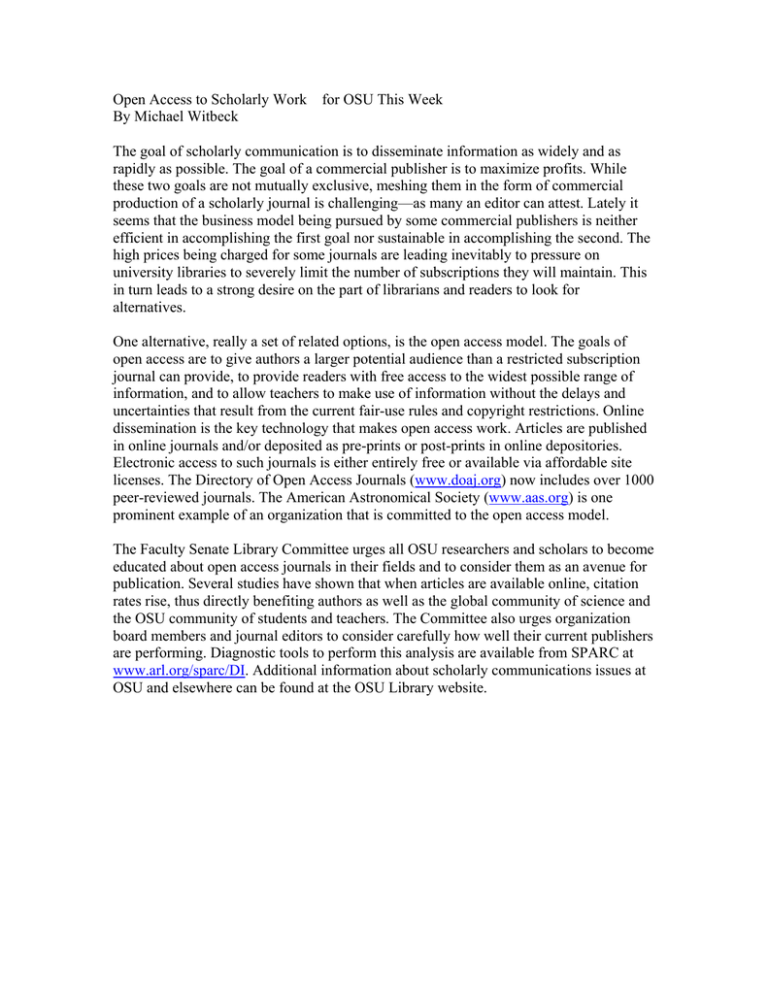
Open Access to Scholarly Work By Michael Witbeck for OSU This Week The goal of scholarly communication is to disseminate information as widely and as rapidly as possible. The goal of a commercial publisher is to maximize profits. While these two goals are not mutually exclusive, meshing them in the form of commercial production of a scholarly journal is challenging—as many an editor can attest. Lately it seems that the business model being pursued by some commercial publishers is neither efficient in accomplishing the first goal nor sustainable in accomplishing the second. The high prices being charged for some journals are leading inevitably to pressure on university libraries to severely limit the number of subscriptions they will maintain. This in turn leads to a strong desire on the part of librarians and readers to look for alternatives. One alternative, really a set of related options, is the open access model. The goals of open access are to give authors a larger potential audience than a restricted subscription journal can provide, to provide readers with free access to the widest possible range of information, and to allow teachers to make use of information without the delays and uncertainties that result from the current fair-use rules and copyright restrictions. Online dissemination is the key technology that makes open access work. Articles are published in online journals and/or deposited as pre-prints or post-prints in online depositories. Electronic access to such journals is either entirely free or available via affordable site licenses. The Directory of Open Access Journals (www.doaj.org) now includes over 1000 peer-reviewed journals. The American Astronomical Society (www.aas.org) is one prominent example of an organization that is committed to the open access model. The Faculty Senate Library Committee urges all OSU researchers and scholars to become educated about open access journals in their fields and to consider them as an avenue for publication. Several studies have shown that when articles are available online, citation rates rise, thus directly benefiting authors as well as the global community of science and the OSU community of students and teachers. The Committee also urges organization board members and journal editors to consider carefully how well their current publishers are performing. Diagnostic tools to perform this analysis are available from SPARC at www.arl.org/sparc/DI. Additional information about scholarly communications issues at OSU and elsewhere can be found at the OSU Library website.
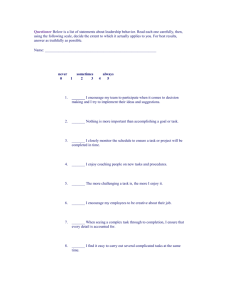
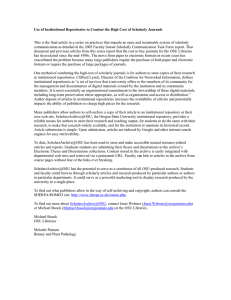
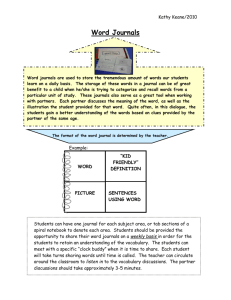
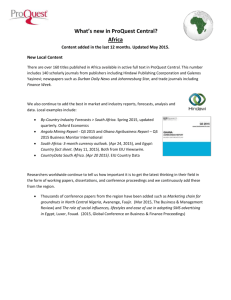
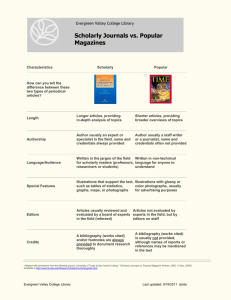
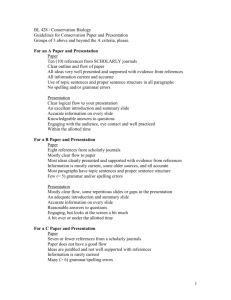
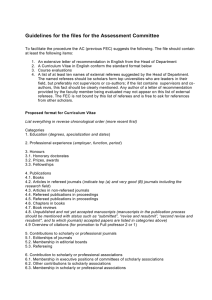
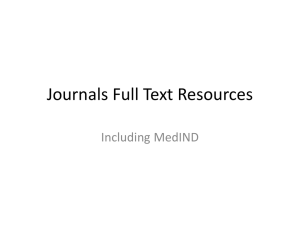
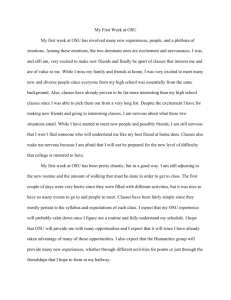
![1 [Slide 1] Good morning, my name is Michaela Willi Hooper, and I’m the new scholarly communication](http://s2.studylib.net/store/data/011105166_1-33816014265017d88d178255572ac67a-300x300.png)
